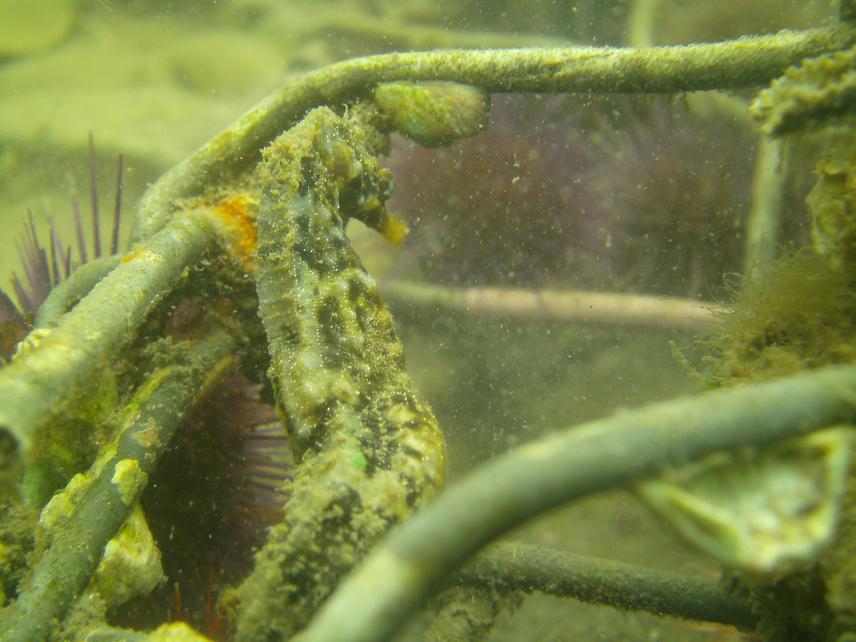Louw Claassens
Other projects
21 Sep 2015
The Distribution and Ecology of the Endangered Knysna Seahorse (Hippocampus capensis Boulenger, 1900) in the Thesen Islands Marina, South Africa
The overarching aim of the Knysna Seahorse Status (KySS) project is to ensure the long-term conservation of the Knysna seahorse and its habitat. This research project will generate essential ecological information of this species which will be used to establish seahorse reserves within the Knysna estuary. Ongoing monitoring will then be used to assess if these reserves are successful long-term conservation tools. The outcomes of this project have the potential to provide much needed seahorse conservation guidance on an international level.

A tagged Knysna seahorse.
Site fidelity assessment
Site fidelity of H. capensis will be investigated within two different habitat types (Reno mattress, mixed vegetation on sediment (Claassens, 2016) at two different sites (marina, estuary) within the Knysna estuary. Animals will be tagged using VIFE tags (http://www.nmt.us/products/vie/vie.shtml). The site fidelity of H. capensis will be investigated by assessing the movement of animals by conducting daily monitoring of tagged individuals within the specific habitats for a two-week period.
Home-range assessment
Following the site fidelity assessment, monthly monitoring of tagged individuals will continue for a minimum period of 12 months. Various ecological features of H. capensis will be investigated during this time, which will include: population abundance, length at age, length and age at maturity, life span, growth, monogamy, and seasonal reproduction.
Habitat monitoring
The baseline extent of H. capensis habitat will be established during an initial habitat survey using an OpenROV (https://www.openrov.com/). The dominant vegetation type and total percentage cover will be recorded using standard transect sample techniques and a GPS will be used to demarcate the habitat area. Habitat extent will then be mapped using ARCGIS. Focus will be placed on the habitat availability of localised seahorse populations. Habitat extent within the entire estuary will also be assessed and compared with results from a recent Z. capensis survey (February 2017). In addition, habitat availability within the Keurbooms and Swartvlei estuaries will be investigated. The establishment of H. capensis habitat availability in all three estuaries will assist in the IUCN review of this species, scheduled for 2017/2018 (R. Pollom pers. comm.) particularly in the assessment of this species Area of Occupancy (Czembor and Bell, 2012).
Habitat extent for localised seahorse populations will be monitored on a monthly basis in conjunction with the home-range assessment. These assessments will monitor both habitat extent, dominant vegetation type, percentage cover and the extent of any visible impacts to the habitat e.g. bait digging, boat damage, habitat loss owing to impacts from a nuisance algal bloom.